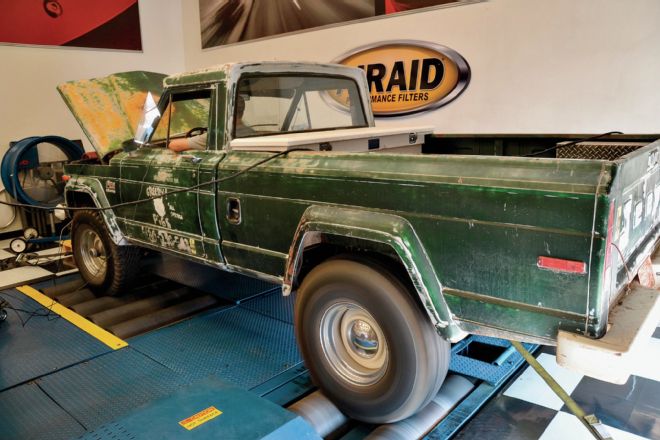
 Verne Simons
Senior Editor, Jp
Verne Simons
Senior Editor, Jp
No one questions that the Pig Truck (Dec. ’07) is cool. It was built at a time when style still meant something in American car manufacturing. Between the pushrod V-8, wing windows, granny-geared manual transmission, solid axles holding 4.10:1 ring-and-pinions, super thick sheetmetal…oh, we could keep going, but we’ll spare you. We’ve said it before, and we’ll say it again, this thing oozes ’Merica, even out of the slightly leaky Dana 20 transfer case. And while the AMC 360 V-8 had plenty of grunt down low, we never really got to rev it to a point that it made any reasonable amount of horsepower. That’s because it really wouldn’t rev much past 3,500 rpm without the valvetrain losing track of its job. Like many late ’70s engines, the thing was strangled with dubious emissions equipment in an early attempt to save the world. Also, late ’70s AMCs are not exactly well known for awe-inspiring ignition systems. Original equipment mechanical problems aside, Piggy had also spent the past 36 years and just over 90,000 miles receiving sporadic use and even more sporadic maintenance. Since we’ve owned the Jeep, we’ve repaired a few issues and drove the truck occasionally, but it’s not exactly our most reliable or efficient vehicle, so it hasn’t racked up the miles or been on the top of our priorities list for upgrades or repairs. Recently when Editor Pete Trasborg asked if we were down with doing a power-building article on the AMC 360, we had to say that we’d better run a compression check before trying to add any power. Having said that, with the stock ignition system, camshaft, air-pump system, intake, and stock valvetrain, we hoped that it would be fairly simple to get the AMC 360 to run much better than it currently did.
The compression test yielded a very consistent 142-150 psi in each of the eight holes. A puff of white smoke during start-up and a little oil on a couple of the plugs seemed to indicate a few leaky valve seals but an otherwise healthy engine. With a call to Edelbrock for a bunch of parts and a few odds and ends from Davis Unified Ignition and Summit Racing, in theory we should be able to rev the engine higher and thus make more power. To get baseline numbers, we drove the truck over to our friends at AIRAID where their Mustang Dynamometer allowed us to see what the tired valvetrain was doing for us (or what it was not doing for us). This time, we’ll go through installing and showing you the parts we are going to use while showing you a few tips and tricks. Next time in The Hunt for Power, we will run and tune the truck and then return to AIRAID to see what kind of power we’ve built with these parts.
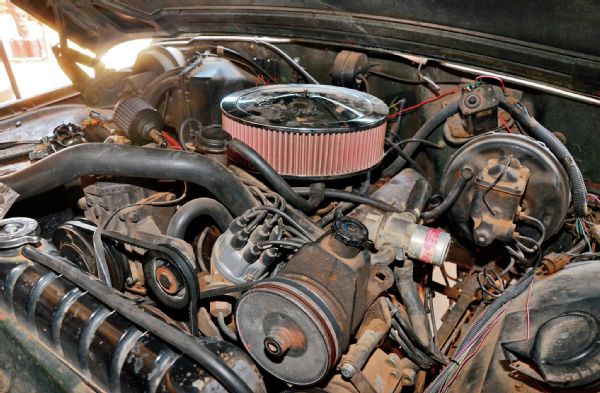
Here is our victim: the Pig Truck’s ’78 AMC 360ci V-8 with a Howell TBI conversion bolted on to the stock steel two-barrel intake manifold. Note that we had not fully removed the factory air injection system. Our thinking was that the exhaust checkvalves and removing the belt from the air pump would allow the engine to run correctly despite the now-obsolete emissions parts. We suspect that one or both of the checkvalves were leaking and allowing extra oxygen into the exhaust, causing false readings via the O2 sensor and causing the rich condition. We’ll finally bit the bullet and removed the smog pump and injection tubes.
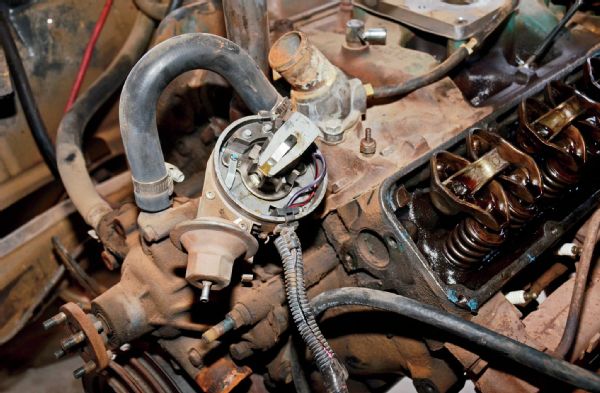
We set the engine to top-dead center based on the positioning of the timing mark on the harmonic balancer and the closing of the intake valve on the number-one cylinder. We then took note of the position of the distributor’s rotor so that when we reassembled the engine, we could get the distributor reinstalled correctly.
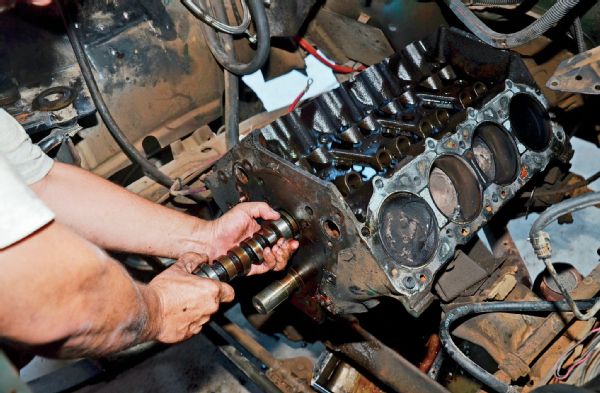
We then removed the rocker arms, pushrods, lifters, and eventually, the heads. If you plan on re-using the camshaft, you have to number and keep track of each pushrod and each lifter. They have to go back in the same location relative to the camshaft. We then pulled the camshaft out, making sure not to damage the bearings. We also pulled the oil pan to reseal the part.
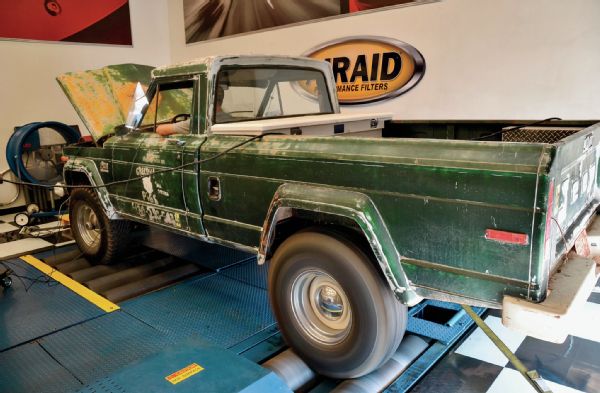
Next we pulled off the throttle body, removed the radiator and hoses, and pulled the accessories and water pump. We then removed all the bolts holding the intake manifold to the engine. We used some seriously strong gasket maker the last time we installed the intake manifold to repair a vacuum leak. Try as we may with screwdrivers, we could not free the intake manifold. Our solution: Insert a wedge in the form of a hatchet.
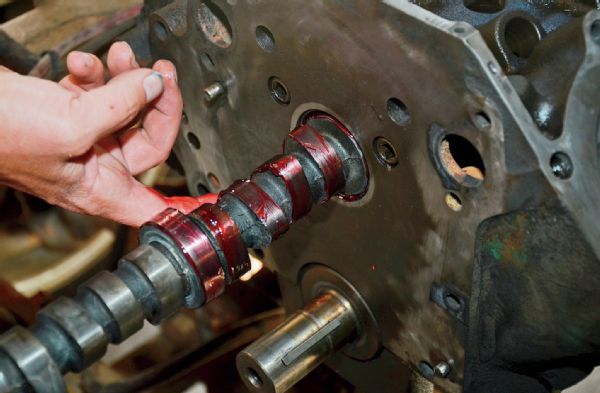
Once the cam is out, we were done with the disassembly of the engine. Now was the time to clean up the lifter galley and seal surfaces. Since we are going to keep using this truck as a truck, we opted to go with a fairly mild cam and lifters from Edelbrock (PN 2132, $204.97). This is a hydraulic flat tappet cam offering power from off idle to 5,500 rpm. Reinstalling the camshaft has to be done carefully to again ensure that the cam bearings are not damaged.
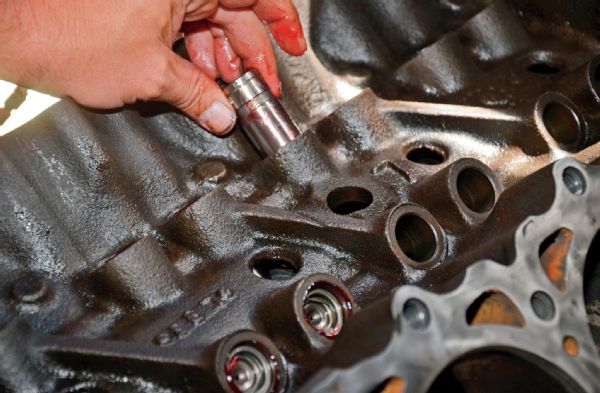
We also slathered the assembly lube over the included lifters. The assembly lube is sticky and slick and helps protect the new parts during initial startup when parts have not yet broken-in and there is not much oil circulating in the engine.
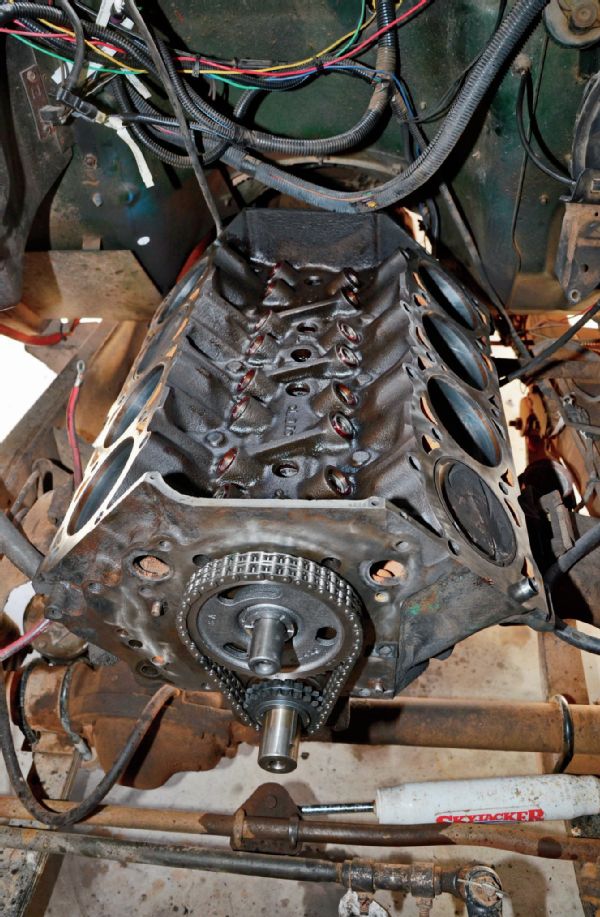
With the installation of our Edelbrock Performer-Link true roller timing chain set (PN 7818), our AMC is once again a short block, we guess. This chain allows the installer to set cam timing four degrees advanced, four degrees retarded, or stock. We went with the stock setting.
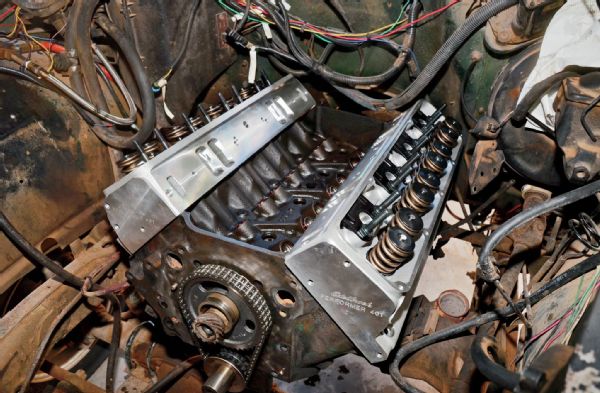
Next, we installed the most beautiful and awesome parts to ever grace our paltry garage. Edelbrock’s Performer Cylinder Heads (PN 60139) sure ought to clean up our old AMC’s valvetrain. Add in the new camshaft and a few other parts we’ll get to in a minute and the Pig Truck should run like a top.
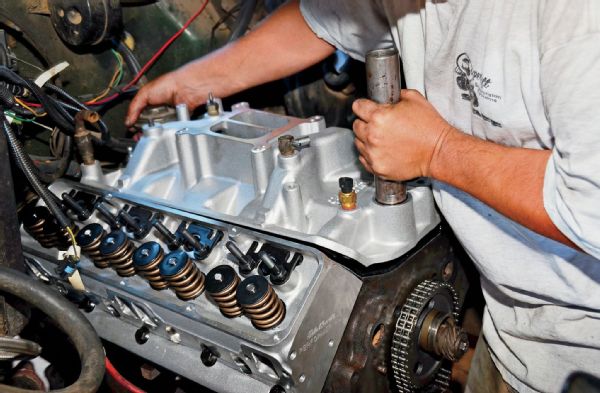
Once the heads were installed on the engine, we tossed the Edelbrock Performer intake on in its new home. If nothing else, we must have dropped 40 pounds when we went away from the cast iron AMC intake manifold. Plus, the Edelbrock Performer intake manifold (PN 3731) has a great reputation among FSJ folks for added power and torque.
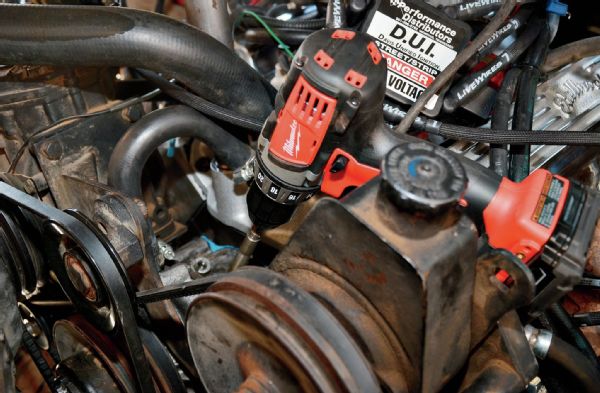
Once the engine was back together, including some awesome finned Classic Series Edelbrock valve covers (PN 4199), we chucked up a home-built oil pump priming tool and primed the engine. This helps ensure that plenty of oil gets on the new engine components before initial start-up.
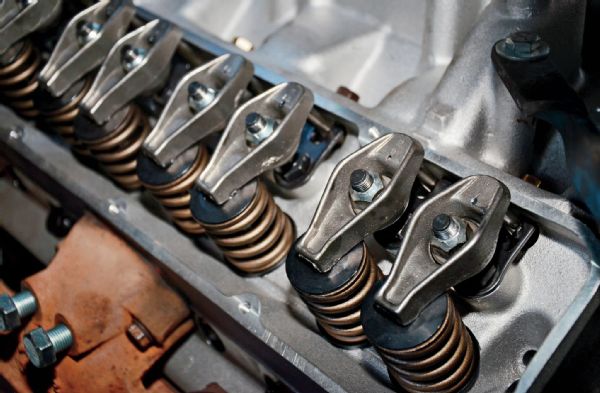
After that, we added in pushrods and rocker arms from Summit Racing to the Edelbrock heads. The pushrods are an Edelbrock part (PN 9637), made of hardened steel, and have dimensions just for the AMC Edelbrock heads. The rockers are from COMP Cams (PN 1231-16). These rockers are intended for use in a Ford small-block but work perfectly with the Edlebrock heads, included valve springs, and 3⁄8-inch rocker studs. We installed them as you would with GM or Ford small-block rockers by tightening them until resistance was felt on the pushrod and then adding half a turn.
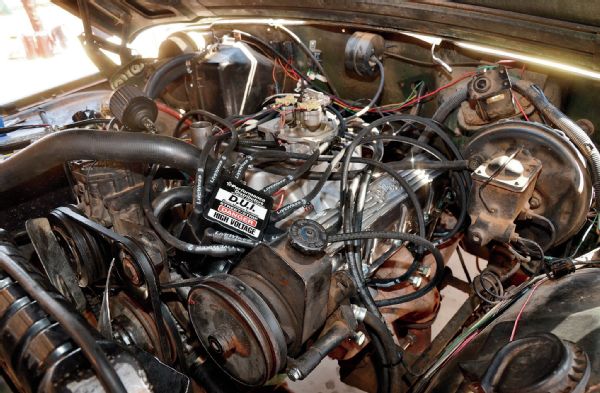
The last major mechanical component we added to the build side of this project was a HEI-equipped distributor (PN 40820BK) from Davis Unified Ignition and a set of Livewires (PN C9076BK) in black. These parts help clean up the inexpensive, and somewhat dubious, factory ignition parts. Next time in The Hunt for Power, we’ll fire this Pig up, break the new parts in, and do some tuning to see how much power the Pig Truck can pump out.

To get baseline numbers, we drove Piggy over to AIRAID and strapped it down on their Mustang Dynamometer. The truck was running rich, and we told Donovan Schafer, who was running the dyno, that we didn’t have high hopes for the old truck setting a new dyno record because we knew it didn’t rev very well. After a couple of runs, the Pig tossed down a weather-corrected 81.9 hp at 2,822 rpm. Max torque was a respectable weather-corrected 178.7 lb-ft. The horsepower definitely seems to be a reflection of the low RPMs.